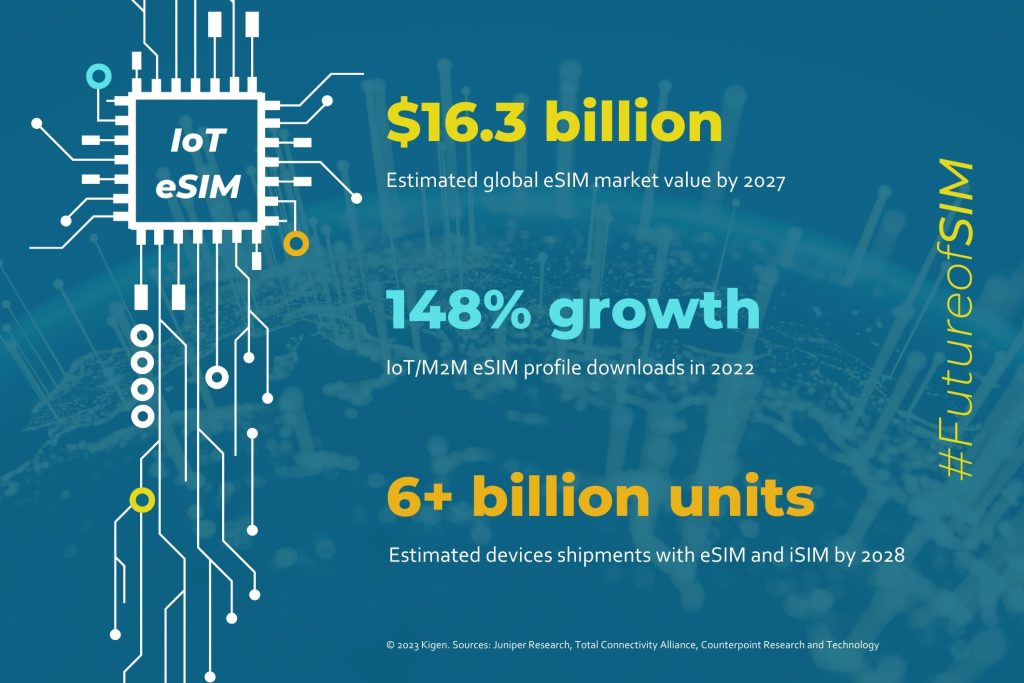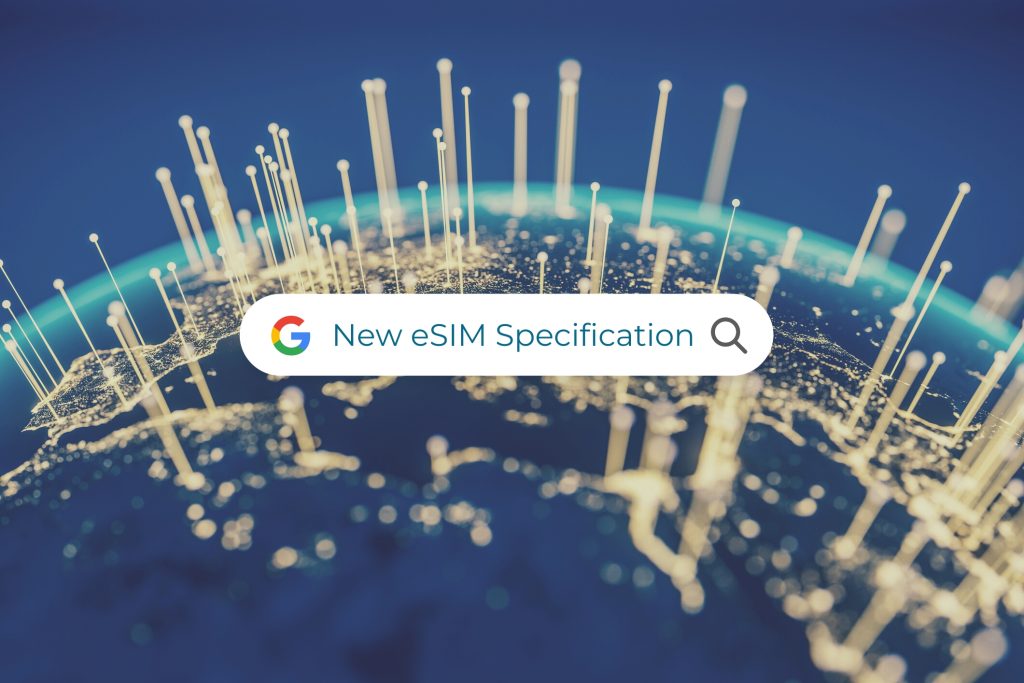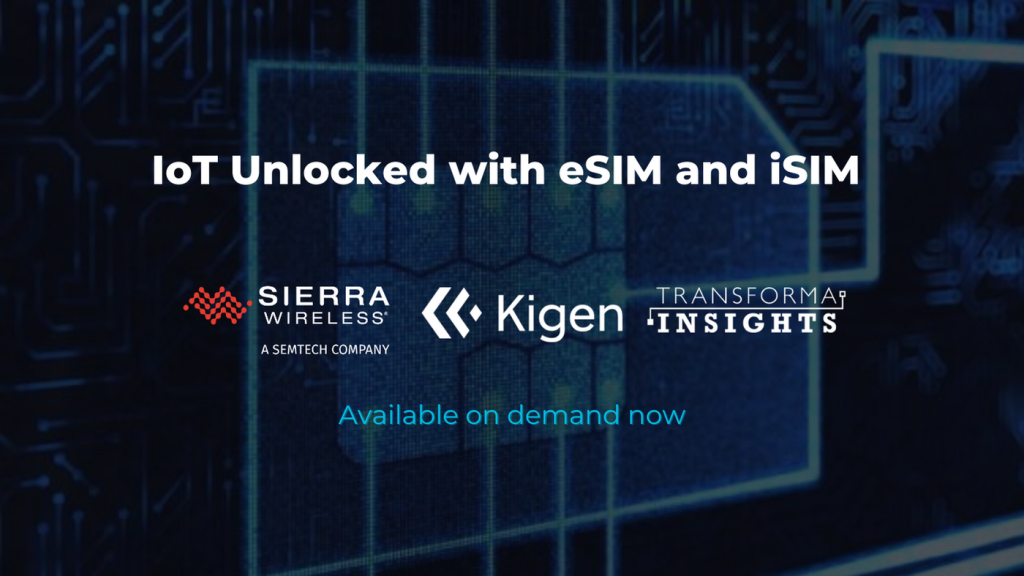
- Resources
- Blog
An introduction to eSIM for IoT devices
A guide to eSIM and cellular IoT
What is an embedded SIM or eSIM?
The ”embedded SIM” or eSIM combines hardware, a secure element and a software package called a universal integrated circuit card (UICC). It provides network access profiles to the SIM card that can be downloaded, enabled and managed securely. eSIMs are used in different IoT devices depending on the use case and are available in various form factors.
At its core, an eSIM is a non-removable chip soldered onto a circuit board optimized for performance and reliable IoT device connectivity. The eSIM is produced according to the GSMA standard and can be used by consumer and machine-to-machine (M2M) devices. In addition, the eSIM uses an embedded eUICC with a secure element integrated into the circuit board for improved security.
What is an identity profile?
An embedded SIM chip contains the eSIM profile, the device’s unique identity and subscription contract for a particular mobile network provider. Moreover, it’s a safe method for downloading user profiles wirelessly without switching the actual SIM card.
Activating new eSIM profiles
A new carrier profile means registering for a new account through the network operator, which is simpler with eSIM for IoT devices than traditional SIMs. Once a downloadable profile is needed, the network operator places it on the download server, the Subscription Manager-Data Preparation + (SM-DP+), which stores and delivers digital eSIM profiles.
The benefits of eSIM for IoT
There are several advantages of using eSIM technology; for instance, the insertion of chips into IoT devices at the manufacturing stage allows OEMs to design compact and energy-efficient hardware and prevents physical tampering of the device.
A further benefit is that they enable original equipment manufacturers (OEMs) to use a single stock-keeping unit (SKU) that saves production and distribution costs. Consequently, this reduces complexity in both manufacturing and operations.
Yet another advantage of eSIM for IoT is that fleets of devices can be remotely updated with the latest software and firmware over the air (OTA) throughout the device’s entire lifecycle, enhancing operational efficiency.
Some advantages of eSIM include:
- Streamline production: device manufacturing with a single stock-keeping unit (SKU) reduces costs.
- Flexibility: Organizations can employ inexpensive connected devices designed for specific tasks
- Security: Authentication of devices ensures data is exchanged securely from chip to cloud as they use a Root of Trust IoT SAFE initiative
- Global connectivity: Devices can switch networks seamlessly and securely worldwide
eSIM-enabled devices on the rise
Counterpoint Research shows the industry has a broad ecosystem of partners with more than 275 mobile and virtual network operators supporting eSIM worldwide.
-In 2023, the IoT module eSIM/iSIM market will surpass the 500-million-units, as cited by IOT analytics
–70% of all cellular devices shipped in 2030 will sport an eSIM, according to Counterpoint Research
The adoption of eSIM technology is accelerating due to enterprises embracing IoT and discovering 5G networks and eSIM technologies to manage deployments. Moreover, the eIM (eSIM IoT Remote Manager) standardized provisioning tool as described in the GSMA SGP.32 specification will enable further growth over the coming years by standardizing large-scale IoT deployments and management of devices.



Cellular Connectivity technologies
Cellular network-based IoT connectivity offers comprehensive security and high interoperability, allowing organizations to scale quickly. Enterprises can choose from a selection of connectivity technology such as NB-IoT, LTE-M, 3G, LTE, and 5G that best suits their data requirements. It should also be noted that enterprises can choose a combination of technologies for seamless device connectivity to suit their industry-specific applications.
Data Roaming for eSIM IoT-enabled devices
Simply put, “roaming” means letting an IoT device connect to a different network provider’s coverage area when it’s outside its usual network. Roaming allows the device to connect wirelessly and access data using another mobile network. Combining localization with advanced eSIM network switching is a solution to resolve roaming problems for global IoT enterprise deployments where items are on the move.
eSIM profile activation
A new carrier profile means registering for a new account through the network operator, which is easier with eSIM-enabled devices than traditional SIMs. Once a downloadable profile is needed, the network operator places it on the download server known as the Subscription Manager Data Preparation Address or SM-DP+, used to store and deliver digital eSIM profiles.
eSIM advantages for mobile network operators
Mobile network providers stand to gain new opportunities from the growing number of industry-specific IoT projects using IoT connectivity solutions. Thanks to the GSMA certification, operators can facilitate the secure onboarding of IoT devices into their networks, even without prior knowledge. This allows them to maintain a high level of confidence in the security and integrity of their network.
What is remote SIM provisioning?
eSIM provides the hardware soldered to the board inside a device and the solution for connecting and updating network profiles and firmware remotely over the air. Authorized users can access and update profiles and other data on the eSIM via an over-the-air, remote SIM provisioning solution (RSP).
How does remote provisioning work?
The RSP updates services, collects data and provides additional services through cellular connection after the devices are dispatched. Also worth noting is that eSIMs are compatible with all leading carriers, enabling interoperability and remote eSIM profile provisioning on any device. It benefits large IoT deployments spread over regions where local device management is expensive.
Here is a recap of some key features of RSP:
- Devices are activated over the air for a cellular connection to the network
- RSP and data generation services provide flexibility for manufacturers and IoT Service Providers
- Switching profiles over-the-air by device owners to remotely change network operators
In summary, eSIM technology delivers a reliable and scalable solution for IoT device connectivity solutions. eSIM accelerates IoT deployments for utilities, logistics, smart transportation and more.
By using Kigen technology to virtualize SIMs on-chip, companies can create efficiencies and performance gains in how their IoT devices are produced, auto-provisioned and managed. Speak to one of our experts to find out more.


